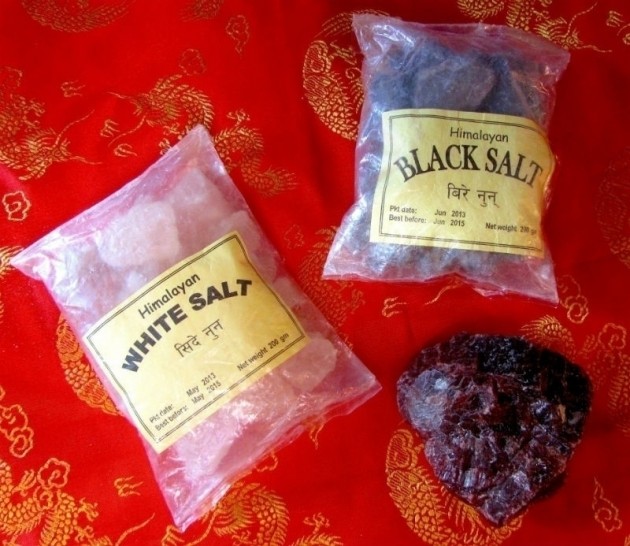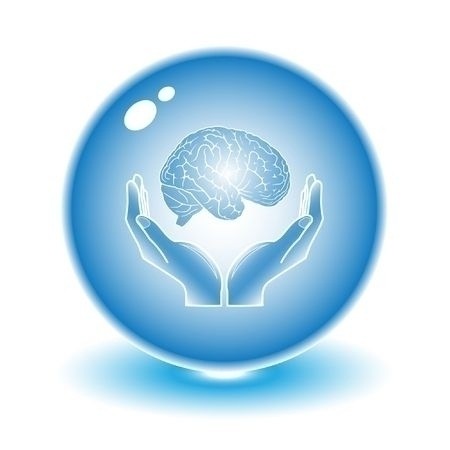Ecopolitan March 2012 Newsletter
Ecopolitan's monthly newsletter is back —giving you the latest and greatest information and news on Dr. T’s lecture schedule, Ecopolitan events and news, and health tips.
Why Eco-Adventures?
In this newsletter you will discover: Revolutionary NEW scientific method to prevent serious illnesses and degenerative diseases caused by viruses, bacteria, and fungus that colonize our bodies because of modern living. Personal account of Dr. T's trip to Tanzania, learning about indigenous human nutrition and African wildlife, and his record speed climb up Kilimanjaro without...
Acid Reflux - Gastroesophageal Reflux Disease
Gastroesophageal reflux disease (GERD) is a disorder in which contents of the stomach or small intestine repeatedly move back up into the esophagus (tube connecting the throat to the stomach). This regurgitating action is called reflux. Reflux causes heartburn, and although most people have an attack of heartburn at some point in their lives, persistent reflux and severe heartburn may indicate...
ADD / ADHD
Attention deficit/hyperactivity disorder (ADHD) is the most commonly diagnosed behavioral disorder of childhood, estimated to affect between 3% and 5% of school-aged children. The core symptoms of ADHD include inattention, hyperactivity, and impulsivity. Although many people occasionally have difficulty sitting still, paying attention, or controlling impulsive behavior, these behaviors are so...
Alopecia / Hair Loss
Alopecia is the absence or slowing of hair growth in an area of the body where hair formerly grew. This disorder has several causes, including physical damage to the hair shaft or follicles and fungal infections. Telogen effluvium, which is when the hair's growth cycle is disrupted temporarily by such temporary problems such as a chemical imbalance or stress, is another cause. Alopecia areata,...
Alzheimer's Disease
Adapted from the book "BrainRecovery.com" by David Perlmutter, MD Board-Certified Neurologist At present, approximately 4.5 million Americans have Alzheimer's disease. By the year 2030, it has been estimated that this number will approach 9 million. Prevalence of Alzheimer's disease has been estimated to be 50% in individuals 85 years or older-the most rapidly growing segment of...
Angina Pectoris
Angina Pectoris is defined as Acute pain in the chest resulting from decreased blood supply to the heart muscle (myocardial ischemia). A syndrome due to myocardial oxygen deficit, characterized by prolonged substernal, thoracic pain which is precipitated chiefly by emotion, exercise, or the ingestion of a heavy meal. It is caused by a temporary inability of the...
Asthma
Asthma is a disease in which inflammation of the airways restricts airflow in and out of the lungs. The word asthma comes from the Greek word for "panting." The panting and wheezing sound characteristic of asthma occur because of the restricted flow of air. Normally, when you breathe in an irritant or are subjected to a stressor such as exercise, your airways relax and open, allowing...
Autoimmune Conditions
Examples of autoimmune conditions include the following: Rheumatoid arthritis (RA) Type 1 diabetes Crohn's Disease Hashimoto's thyroiditis Neurological diseases Multiple Sclerosis (MS) Glomerulanephritis Pernicious Anaemia Goodpasture's syndrome Scleroderma Raynaud's Phenomenon Lupus (e.g., systemic lupus erythematosus [SLE]) Inflammatory bowel disease (IBD)...
Blood Interpretation
Cholesterol Cholesterol values should only be analyzed after a 12 hour fast. Further, the physician must be aware that the patient's posture prior to the blood draw is significant. If the patient has been in a recumbent posture for more than 20 minutes, cholesterol values may be up to 15% lower than normal. Cholesterol is a blood fat which is the prime building block component to make...
Blood Sugar Dysregulation / Metabolic Syndrome
General nutritional support strategies for individuals with any dysglycemic response. i.e. Metabolic Syndrome (lnsulin Resistance and Hyperinsulinemia) Type II Diabetes Reactive Hypoglycemia. NOTE: "Type 1 Diabetes" see Autoimmune Section
Cancer
What are the nutritional strategies in treatment of cancer? Here is your guide to enhancing the immune / antioxidant status, enzyme therapy, chemotherapy and / or radiation therapy support and suggested nutritional supplementation.
Cardiovascular Disease
Definitions of Cardiovascular Disease Risk Factors Total cholesterol Cholesterol is a waxy fat like substance. Total cholesterol refers to the sum of the different sub-fractions of cholesterol that are measured in the blood. Total cholesterol is an independent risk factor for cardiovascular disease. The National Cholesterol Education Program says 240 is considered high. A person with this level...
Cerebral Palsy
Pathological Considerations Also called Little's Disease or Congenital Spastic Paralysis, this condition is usually the result of developmental defects in the brain or central nervous system or from trauma at birth. It is a non-progressive, symmetrical and bilateral paralysis although the physical and mental defects may not be fully evident for several years after birth. ...
Depression
Depression is a major problem in the United States. Nearly 15 million Americans will suffer true clinical depression each year. Depression is also a big business for drug companies, especially for the maker of Prozac-Eli Lilly and Company. The good news is that there are natural measures to deal with depression that are both safer and more effective.
Ear Dysfunction - Meniere's Syndrome / Tinnitus
The disease was first diagnosed in 1861 by Prosper Meniere. Meniere's syndrome is an illness that afflicts more than seven million Americans, according to the Journal of American Medical Association (July 25, 1990). It is generally believed to be caused by a buildup of fluid in the inner ear. The resulting pressure can manifest the following list of symptoms: ringing or buzzing in the ears...
Enuresis (Bed-Wetting)
Loss of control of the bladder by day, by night, or both. Not limited to young children. Many adolescents and adults are afflicted in this way, either constantly or in times of stress or anxiety. Dr. John W. Gerard, Professor of Pediatrics at the University of Saskatchewan, presents evidence that bedwetting is sometimes the result of an allergy. "The prime problem is that the bedwetting...
Eye Conditions
Cataracts Cataracts are clumps of protein that collect on the lens of an eye and interfere with vision. Normally, light passes through the lens (the clear tissue behind the pupil) and focuses on the retina. The retina is the light-sensitive layer of the eye that sends visual signals to the brain. A cataract occurs when the normally clear lens becomes cloudy. Most cataracts develop slowly...
Female Conditions
Amenorrhea Absence of menstruation. Amenorrhea may be primary (the girl has never begun her periods) or secondary (the woman had her periods once and then stopped having them). Physiologic amenorrhea is the lack of menses before menarche, during pregnancy and early lactation, and after menopause (all considered normal). All other causes of amenorrhea are pathologic. Causes of Primary...
Fibromyalgia
Adapted from "Nutritional Therapies for Fibromyalgia Syndrome", written by Kristi Hughes, ND Fibromyalgia is a syndrome characterized by generalized musculoskeletal pain and stiffness, chronic aching, fatigue, and multiple areas of local tenderness that can be identified during physical examination. Research studies suggest that fibromyalgia pain may be the result of a...
Glossitis and Tongue Related Conditions
An acute or chronic inflammation of the tongue. Glossitis may be either a primary or secondary manifestation of disease. Systemic disorders that may cause the problem include: vitamin deficiency (esp. B vitamins), anemia (pernicious or iron deficiency) and a multitude of skin diseases (aphthous lesions, pemphigus, erythema multiform, lichen planus, etc.). Local problems that may give rise to...
Gout
Gout is a type of arthritis that occurs when too much uric acid builds up in the body, causing crystals to form in joints and joints to become inflamed. It can be hereditary or the result of another condition. Gout usually affects men over 40 with a family history of gout, but it can occur at any time and also affects women, especially after menopause. Excessive intake of food and alcohol,...
Headache: Nonvascular
Headache without vascular cause. The most commonly diagnosed condition in the United States with 70% of these caused by muscle tension. Causes include suboccipital muscle spasms from injury (whiplash), postural strain (caused, for example, by a computer screen angled incorrectly), pillow too large that forces flexion of the neck during rest. Usually gradual onset, but tends to persist in cyclical...
Hepatitis
Inflammation of the liver characterized by patchy or generalized hepatocellular necrosis There are 4 major kinds of hepatitis: type A, type B, type D, and type non-A, non-B. The disease is viral in origin and although types A, B, and D can be distinguished by their antigenic properties, all four display a clinically similar picture. Other less common infective causes of hepatitis include...
Herpes Simplex
Cold Sores/Fever Blisters A spreading cutaneous eruption. Any inflammatory skin disease caused by a herpes virus and characterized by the formation of clusters of small vesicles. When used alone, the term may refer to herpes simplex or to herpes zoster.
Herpes Zoster (Shingles)
Definition An acute infection caused by reactivation of the varicella-zoster virus and involving the dorsal root ganglia; causes eruptions and neuralgia on the skin corresponding to the distribution of the affected root ganglia; commonly known as "shingles."
Intervertebral Disc Disease
Rupture of the annulus fibroses causing leaking of the nucleus pulposus into the intradural space. Also called herniated disc, herniated nucleus pulposus, ruptured disc, or disc syndrome. The cause is degeneration of the fibers of the annulus fibrosus, or trauma of the area leading to the rupture of the annulus. Rupture usually occurs at middle age or older. Then, the normal pressure that...
Kidney Stones
Urinary calculi occurring in any part of the urinary tract are abnormal concretions usually composed of mineral salts such as mixtures of calcium oxalate, calcium phosphate, and magnesium ammonium phosphate. They vary in size from microscopic to several centimeters in diameter. About 80% of all urinary stones contain calcium. The majority of these are composed of calcium oxalate. Contrary to...
Lupus (Erythematosus)
This is a chronic, inflammatory, autoimmune (the body is attacking itself) disease that affects connective tissue (tissue that binds and supports various structures of the body and also includes the blood). Discoid lupus erythematosus (DLE) is a less serious type, affecting exposed areas of the skin and sometimes the joints. Systemic lupus erythematosus (SLE) is more serious,...
Macular Degeneration
Macular degeneration is a painless, degenerative eye disease that affects more than 10 million Americans. It is the leading cause of legal blindness in persons over the age of 55 in the United States. While complete blindness does not occur in most people with the disorder, macular degeneration often interferes with reading, driving, or performing other daily activities. There are two forms of...
Memory Loss / Cognitive Function Decline
Persons over 65 years old now comprise 12-15% of the U.S. population. Memory loss is one of the most common symptoms
Mouth / Lip Conditions
Angular Stomatitis Redness, cracking and flaking at corners of mouth. Significant if bilateral only. Rule out poor dentures, syphilis, herpes. Nutrients Involved Riboflavin, niacin, pyridoxine, iron Suggested Nutritional Supplementation Hemagenics - 1-2 tablets twice daily with food. Nutritional support for red blood cell formation. Lipotain -...
Multiple Sclerosis
Nearly 350,000 Americans are affected by one of medicine's most misunderstood diseases, multiple sclerosis. Although there is no known cure, alternative medicine has recognized a number of contributing factors. Often, the early detection and identification of underlying causes combined with strict dietary and life-style guidelines can stabilize or reverse the symptoms.
Polymyalgia Rheumatica
What is polymyalgia rheumatica? Polymyalgia rheumatica (pronounced pah-lee-my-al-jah room-at-i-ca) is a type of arthritis that affects the muscles. It does not affect the bones, or the joints, which are the spots where two bones come together. It causes muscles to become stiff, tender and very sore. This is called inflammation. Even though the muscles are sore they do not become weak.
Prostatitis (Prostatic Hypertrophy, Benign)
Pathology A common entity which occurs in about four out of every five men in America over the age of 50 years. It is characterized by the growth of multiple fibroadenomatous nodules enlarging the prostate gland and compromising the urethra causing variable degrees of bladder outlet obstruction.
Restless Legs Syndrome and Leg Cramps
Leg Cramps: Nocturnal leg cramps constitute a relatively common complaint in the general practice of medicine and may be very distressing to the patient. Not only is the cause obscure and the treatment relatively unsatisfactory, but even its proper medical name, systremma (anything twisted up together), is unknown to most physicians.
Rheumatoid Arthritis
The Natural Approach Rheumatoid arthritis is a chronic inflammatory condition that affects the entire body but especially the synovial membranes of the joints. It is a classic example of an "autoimmune disease," a condition in which the body's immune system attacks the body's own tissue. Although rheumatoid arthritis is a systemic disease, it affects primarily the joints. The...
Skin Conditions
Acne Vulgaris An inflammatory disease most commonly seen in teenagers. It affects areas where sebaceous glands are largest, most numerous, and most active. Mild cases consisting of few residual signs except possibly dilated pores, and the development of the comedo, or blackhead, may progress through more pathological stages of ruptured sebaceous ducts, pustule formation,...
Small Intestine / Pancreas
Symptoms Abdominal cramps; indigestion 1-3 hours after eating; fatigue after eating; lower bowel gas; alternating constipation and diarrhea; diarrhea; roughage and fiber caused constipation; mucous in stools; stool poorly formed; shiny stool; three or more large bowel movements daily; foul smelling stool; dry flaky skin and/or dry brittle hair; pain in left side under rib cage; acne; food...
Hypothyroidism
Hypothyroidism occurs when your thyroid gland, at the front of your neck, doesn't produce enough thyroid hormone or when your body fails to use thyroid hormone efficiently. There are several types of hypothyroidism. The most common is Hashimoto's thyroiditis, an autoimmune disease in which the body attacks the thyroid gland. The disease affects both sexes and all ages, but is most...
Ulcers (duodenal and gastric), H. Pylori
Your digestive system produces strong acids and juices that are designed to help break down the food you eat so that its components can be used to nourish the body. The lining of the healthy stomach is marvelously resistant to these juices and is not affected by their caustic nature. In ulcer patients, this defense of the stomach's lining against stomach acids has broken down somehow, so that...






